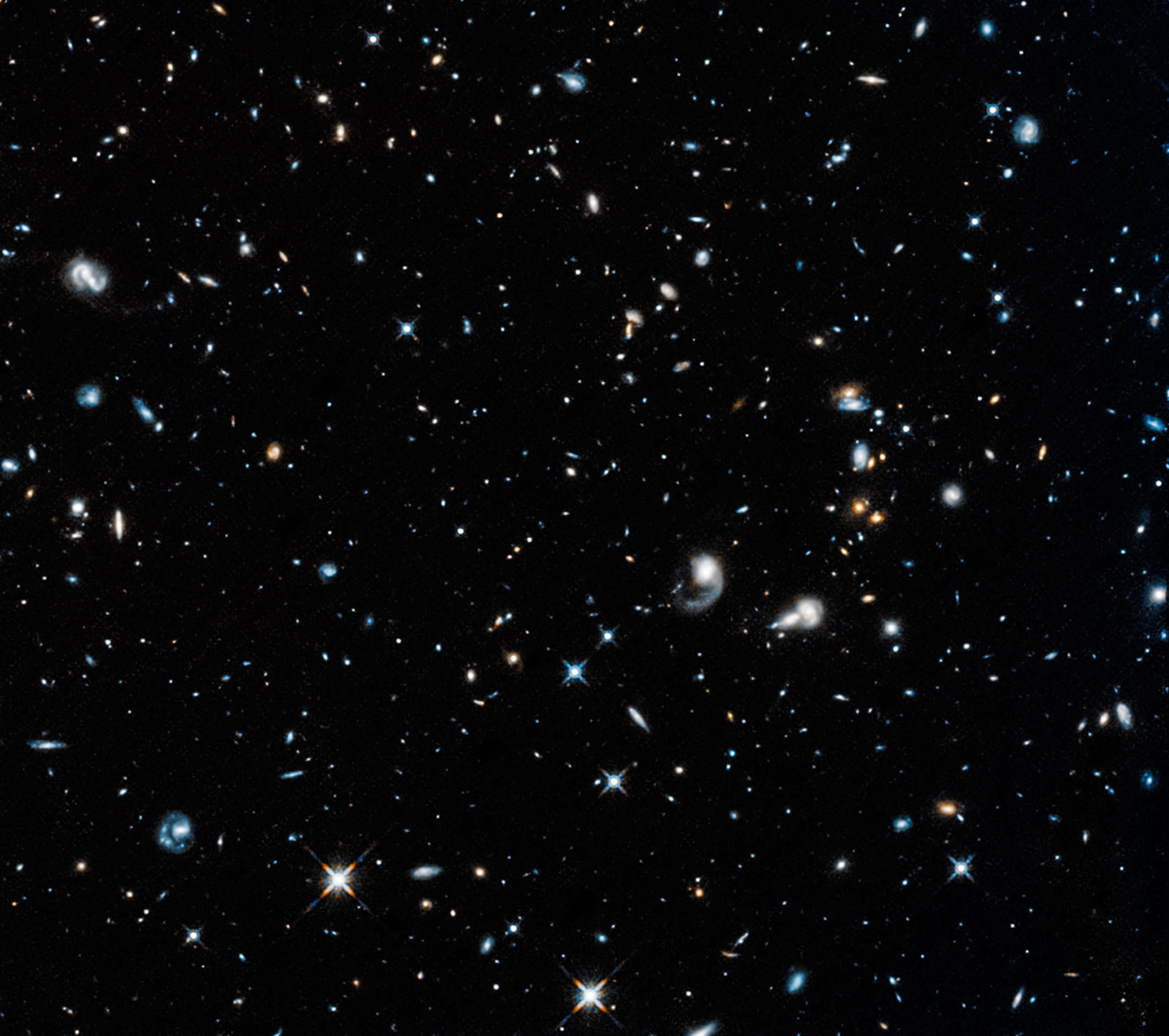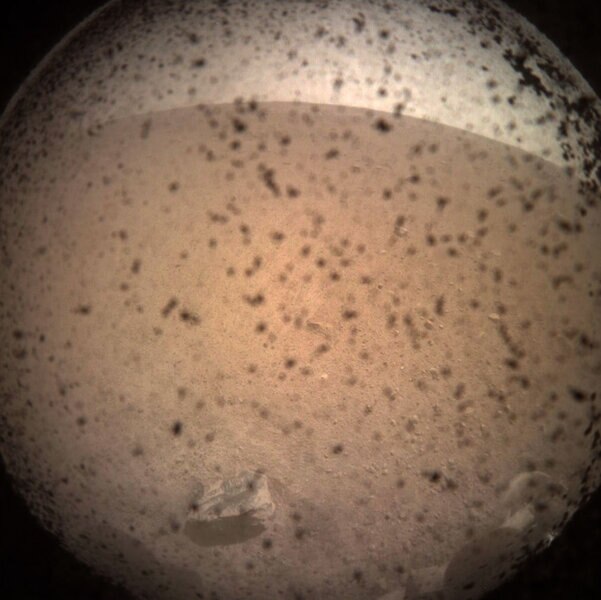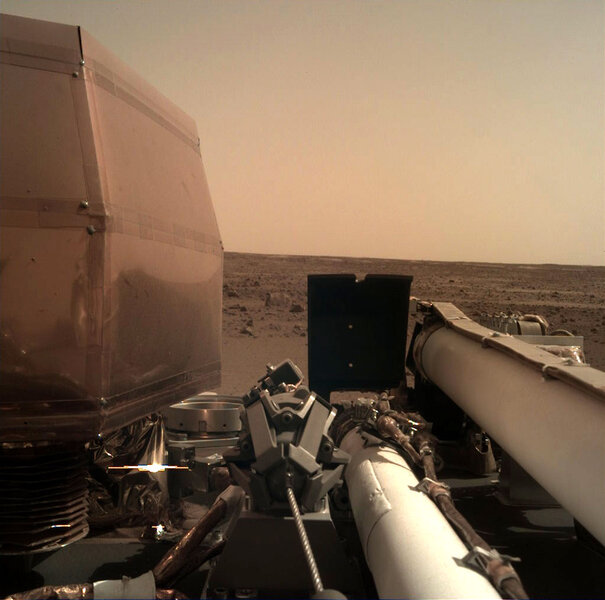Create a free profile to get unlimited access to exclusive videos, sweepstakes, and more!
Beginnings

I have two brief tales of beginnings for you today, one of which is a brand-new start, and the other a restart after an agonizing pause. Both are wonderful.
On Monday, after months of a red planet growing larger in its sights, and then a white-knuckle few minutes of plummeting through its atmosphere at hypersonic speeds, NASA’s InSight lander touched down safely on the surface of Mars.
This is a geology mission, designed to sit in one place (i.e. it’s a lander, not a rover) and use its fleet of sensors to examine what’s going on inside Mars. The surface around it is only of secondary interest, the most important of which is that the interest is minimized. By that I mean that planetary scientists specifically looked for as flat and rock-free a place as they could, so that InSight had the best chance of landing safely with as little excitement as possible.
And find it they did in Elysium Planitia — literally the plains of heaven — a broad, flat plain at the equator of Mars. No hills, no giant boulders… just sand and dust and smallish rocks from the landing site to the horizon, all the better to probe Mars’ interior from.
Moments after it touched down, InSight took this image through its Instrument Context Camera, located below its main instrument deck:
Beauty! This is what we call a “First Light” image, and it’s everything we could have hoped for. The first thing to know is that the dust cover was on over the lens, so the dark spots are literally schmutz on the cover. But through that you can see the Martian horizon (wickedly curved due to the wide-angle fisheye lens), a rock near the lower left, shadows from the lander, and a footpad to the right.
Not long after, a second camera called the Instrument Deployment Camera, located at the end of a robotic arm on the top of the instrument deck, took this gorgeous shot:
Ah, much better! The deck of the lander protected the camera from dust, so the image is much cleaner (even though there’s a dust cover on it as well). The foreground is filled with the instruments on top of InSight’s deck: The SEIS, the Seismic Experiment for Interior Structure, is the copper-looking box on the left, and two of the segments of the robotic arm are on the right. A bright reflection off a piece of foil below the SEIS saturated the camera, giving it that weird blooming appearance.
Beyond that you can see Mars itself. It looks like InSight did indeed land on a very smooth part, but you can also see a boundary where that ends and the surface becomes much rougher, with bigger rocks. InSight had landing radar to make sure it found a good spot, so I’m assuming it worked. Incidentally, the solar arrays were deployed shortly after landing, too, though you can’t see them in this shot. That means InSight is getting power and is ready to go.
We’ll be seeing more images from InSight over the next few days and weeks. At some point the arm will grab the SEIS and the heat flow probe and place them on the surface, where they will start taking data. Sometime in the next couple of months, then, the science really starts.
Which brings me to Beginnings Number 2: The Rebeginninging. And this one is just as cool.
Back on October 5, the Hubble Space Telescope experienced a gyroscope failure, putting itself into “safe mode” and essentially going to sleep. Engineers worked hard on the problem, and despite a balky start were able to get a backup gyro spun up and working.
On October 27 Hubble began observing the skies once again, pointing toward a distant galaxy in the constellation of Pegasus. To celebrate this reawakening, astronomers released the image taken on that good day:
OOooooooohhhhh. The target is a series of very distant galaxies — about 11 billion light years away! — undergoing rigorous star birth, where the astronomers are looking for ultraviolet light blasting out from newborn stars. These galaxies are so far away, though, that the expansion of the Universe itself has redshifted them, stretching their wavelengths into the infrared part of the spectrum. This image is a combination of two infrared filters on Hubble’s Wide Field Camera 3, looking at these galaxies in detail.
A few of the objects in the image are stars in our own galaxy (in general identifiable by the diffraction spikes, the X-shaped lines going through them), but most of what you see here are incredibly distant galaxies, their might and power reduced to dim smudges by the vast and terrible distance between us and them. Some of them are so far away, and their light took so long to reach us, that you see them as they were when the Universe was less than 3 billion years old, the galaxies themselves perhaps only one or two billion years old.
When we peer out in space we see back in time, to when everything in the cosmos was young, when even the galaxies themselves were struggling to find their shapes. That was the first beginning, the beginning of every other beginning in the Universe.
These images here show us just how wonderful and awe-inspiring a beginning can be. It’s been 13.8 billion years, but we’re only just now truly getting our start.





























